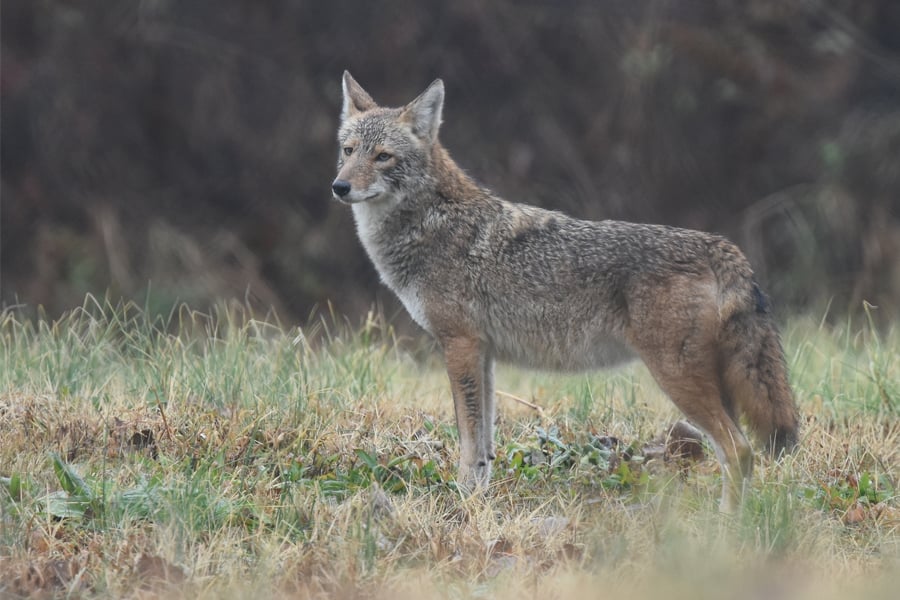Living With Coyotes
This page provides problem-solving advice and ways to make your yard less attractive to coyotes in the first place.

Coyotes & Pets
Survival for coyotes is difficult and some may instinctively see domestic dogs — their close canine cousins — as competitors or threats. This can be especially true if a dog is small (smaller dogs tend to be more aggressive toward larger canines) or if a dog’s yard falls within a coyote’s territory. In some cases, a coyote may try to eliminate a perceived threat or take a smaller dog as prey.
There have been reports of coyotes chasing or attacking dogs during the day, even dogs on leashes, but these confrontations are uncommon and are often initiated by the dog and not the coyote. Still, it’s wise to take a few precautions.
- Always supervise your dog and keep it on a leash — even in a fenced backyard.
- Always keep cats indoors.
- Coyotes can be creatures of habit, so if you see one at the same time and place while walking your pet, change your route or timing.
- If you have a small dog and encounter a coyote, pick up your pet.
Video © Colorado Division of Wildlife
Coyote Encounters
Like domestic dogs, coyotes test their limits around humans and learn something from each exchange. Unless they associate people with negative experiences, such as loud noises, they can become comfortable walking down streets or sidewalks or near schools, basking in yards or parks, and shortening the distance between themselves and humans.
A bold coyote does not necessarily mean an aggressive coyote, but a coyote that maintains its fear of humans will be less likely to cause problems.
- If you’re on a trail that coyotes often use, carry an air horn, whistle, walking stick, cane or other deterrent.
- If you’re followed by a coyote, don’t panic. It’s likely escorting or “shadowing” you through its territory, keeping a calm eye on you to ensure you don’t bother its den.
- If a coyote approaches you, be big, loud and bold. Wave your hands above your head, or hold your jacket wide open. Shout or use a whistle or horn. Don’t turn your back or run; calmly walk away facing the coyote.
- Keep yourself between coyotes and children.
- If a coyote becomes aggressive — snaps, growls or snarls — throw sticks or clumps of dirt at the ground by its feet. Aim for its body if necessary but never its head.
- Report aggressive behavior on private property to your local municipality. Report encounters in a forest preserve to the Forest Preserve District at 630-933-7200.
What You Should Never Do
- Trapping and removing an animal is not always the solution to the problem. Removing the animal is illegal without the proper permits and only creates an open space for another animal to inhabit. A trapped adult may also leave young behind to die of starvation. Focus on removing the attraction, not the animal.
- Never move young from a den.
- Never use poisons. They’re inhumane and may be illegal. They can also result in secondary poisoning of other wild animals or pets.
- It’s illegal to keep wild animals, even for a short time. They have special nutritional, housing and handling needs, and inexperienced individuals who try to raise or treat them inevitably produce unhealthy, tame animals that can’t survive in the wild.
Public Health Concerns
Coyotes are not a public health concern. Domestic dogs bite nearly 900 people in DuPage County each year, but the county does not have one documented case of a coyote biting a human. In other parts of the country, most cases occurred after people were feeding the animals.
Coyotes may carry rabies, but there have not been any recent reports in DuPage County. Although transmissions are uncommon, they may also carry distemper, sarcoptic mange, heartworm and other canine diseases. So, always keep pets’ vaccinations current.